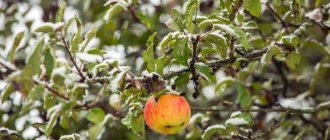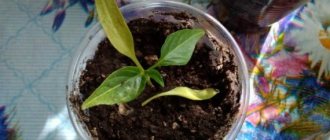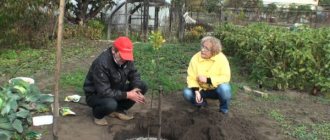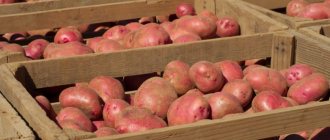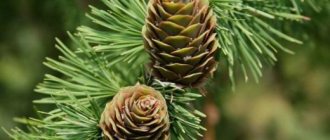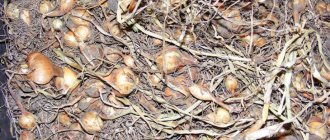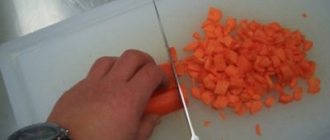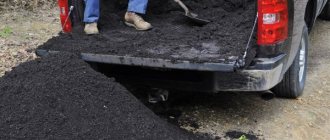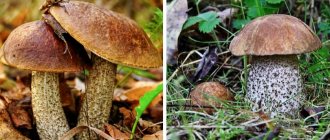Causes of falling apples
There are a number of reasons why apples fall from an apple tree before ripening. Knowing them, it will be possible to preserve the harvest completely. Among them are the following reasons:
- natural;
- which are a consequence of external influences;
- due to human fault.
Increased yield
Every spring, the apple tree is completely covered with a large number of elegant, fragrant flowers. Of these, only a tenth becomes ovaries. After they have formed and the growth process has begun, the tree regulates the number of ovaries. It itself removes poorly developed fruits, small and unnecessary. Only those that the plant is able to feed remain.
Increased productivity of apple trees.
Insufficient moisture
If the apple tree does not have enough water, then it begins to redistribute it so that there is enough for the leaves and shoots. In such a situation, it draws liquid from the fruit, they wrinkle, dry out and fall. Most often, this situation occurs in varieties of short stature and dwarfs that have a shallow root system. Apple trees need to be watered correctly at a certain period: an adult tree needs moisture three times a season, and more often in dry conditions.
Lack of nutrients in the soil
If a plant does not have enough useful fertilizing, then it can discard the excess harvest and leave the number of ovaries that it can feed. It will not be possible to solve this problem radically and immediately. It is worth feeding the apple tree correctly throughout the season, starting with the growing season and taking into account the flowering period.
Excessive moisture
Excessive watering and high humidity during the season can also cause fruits to drop before they are fully ripened. This also happens when groundwater is too close. Wet soil completely adheres to the roots, because of this there is not enough oxygen and the plant sheds excess weight.
Insect pests
Due to the influence of insects that eat the insides of the fruit, the seed chambers are damaged. Most often, the codling moth acts this way. Therefore, the first carrion consists mainly of wormy fruits. You need to fight butterflies that lay many eggs en masse. Weevils and apple sawflies also love to eat juicy apples.
Weevil on an apple tree.
Increased soil acidity
It is important for each plant to choose the right level of acidity. For an optimal apple tree it should be neutral. If the acidity level is too high, then alkaline materials do not allow the plant to eat normally and create a favorable environment for the proliferation of pathogenic bacteria.
Incorrect pollination
For normal fruit development, the apple tree needs cross-pollination. In this case, it is worth considering that the varieties fit one another and the trees are located nearby. To carry out the procedure, it is necessary to attract beneficial insects, which are very fond of flowers planted near trees.
Shedding of leaves
Often, along with the fruits, the apple tree quickly loses its leaves. This is most often associated with starvation of the plant, which has been going on for some time. To prevent this phenomenon, you should regularly feed the fruit crop.
Shedding of leaves on an apple tree.
Fruit ovary drop
Newly appeared ovaries fall off in some cases. Sometimes this is natural, because there are simply too many of them and the apple tree cannot feed them. The second reason is a lack of potassium, which can be very easily eliminated by potassium supplementation. Another reason may be a physiological disorder in the tree’s body, which is caused by wounds or pests.
Apple blossom fall
Delicate and soft flowers may fall off due to external influences, such as strong wind or rain. In this case, it will be difficult for gardeners to prevent. For those living in such conditions, a possible choice would be to plant varieties that are genetically resistant to adverse circumstances.
Late return frosts
In some regions, at the beginning of summer, the temperature drops sharply and even reaches frost. Because of this, young fruits fall off. In order for the apple tree to recover faster from such stress, it needs to be sprayed with boric acid or the Ovary preparation.
Apple tree fruits under the snow.
Technical ripeness of fruits
There are concepts of biological and technical maturity. And most often the second comes later than the first. Perhaps the fruit had simply reached a stage, which is biologically, when the seeds are fully ripe, and therefore dropped off. And before technical maturity they need to lie down a little more.
Poor pollination
In June, the fall of apples is the most abundant. However, sometimes the tree drops almost all its fruits. The reason for this phenomenon lies in poor pollination.
Fallen unripe seedless apples are a sign that the flowers have not been pollinated.
To avoid this problem, apple orchards plant varieties for cross-pollination or graft into the crowns of existing trees.
If it is too late to take preventive measures, the preparations “Ovary” and “Bud” are used to save the harvest. They stimulate the growth of fruits from unpollinated flowers.
We recommend: Grandfather taught how to simply and easily sharpen a hacksaw with a file
Fruit preservation measures
Once the reasons for apples falling off before their ripeness have been identified, you can move on to procedures that will help preserve the fruits on the tree at each stage of their ripening.
Timely watering
The apple tree needs to be watered regularly, but not excessively. You can check whether there is a need to add moisture by looking at the condition of the soil near the tree trunk. You need to choose a place under the crown and dig a little without damaging the roots, and pay attention to who. If it crumbles, then the apple tree needs watering.
It should be borne in mind that excess moisture provokes root rot. Often too wet soil mixed with clay sticks strongly to the roots, which prevents oxygen from reaching them.
The process of watering an apple tree.
Water the plants in special grooves or by making a roller in the tree trunk circle. Watering is carried out three times:
- before flowering;
- when the ovaries form;
- before the cold weather.
In particularly dry regions, five irrigations are carried out per season.
The amount of water required is different for different growths of plantings; low-growing ones need watering more often:
- Young people bring 3 buckets into the tree trunk circle.
- Middle-aged apple trees consume 3-7 buckets per square meter.
- Adults will need 10 buckets or more.
Many varieties respond very well to sprinkling along the crown.
Fertilizers and fertilizing
For full development, you need to provide the apple tree with regular feeding. Moreover, at each stage of growth and development it is necessary to apply special fertilizers:
- In spring and early summer, it is necessary to apply fertilizers with nitrogen so that the apple tree begins to grow vegetatively.
- In summer, you need to add superphosphate so that the apple tree can withstand external adverse influences. You only need 25 g of it per bucket of water and pour the solution over the apple tree. You can also use potassium sulfate.
During the season, you can apply mineral fertilizers to the leaves. They will help the tree develop evenly and improve immunity. Compost is a good fertilizer.
Why do the ovaries of plums and cherry plums fall off?
Unripe green fruits of plums and cherry plums fall in early June, dashing all gardeners' hopes for a bountiful harvest. Why is this happening?
- Freezing of a tree. A tree that has not survived the cold winter tries to bloom in the spring, but subsequently loses its vitality and sheds its ovaries.
- Plums are self-sterile, i.e. In principle, they cannot form ovaries when pollinated by pollen of their own variety and need pollinating varieties.
- Lack of nutrients (zinc, phosphorus, lime), the loss of which is especially noticeable during the formation of ovaries.
- Plum sawfly larvae. This and other plum pests are one of the most common causes of plum ovary drop.
- Lack of moisture. The root system of plum and cherry plum is located close to the surface; these trees cannot receive moisture from the lower layers of the soil. Therefore, plants need to be moistened abundantly.
The reason for the dropping of unripe fruits may be excessive acidity of the soil.
What to do when plum and cherry plum ovaries fall off
Trees whose ovaries have already begun to fall cannot always be cured
Therefore, pay special attention to prevention:
- check the self-fertility of the variety. Most modern varieties of plums and cherry plums that produce abundant harvests are self-sterile. They need cross-pollination with a tree of a different variety (bees and wasps do this job). Therefore, for cross-pollination, plant trees no further than 10 m from each other;
- feed the plants with ash, eggshells, diluted mullein (1:10) and bird droppings (1:15), add calcium nitrate (1 tablespoon per 10 liters of water) and pour up to 30-40 liters of solution under each tree;
- treat plants against plum sawfly with Novoaktion, Aktara, Fufanon in accordance with the instructions for use;
- grow large-fruited cherry plum - it is practically resistant to diseases and pests of plums, and its fruits are a worthy alternative to plums;
- Water the tree generously in hot weather at the rate of 4-5 buckets per tree.
Abundant carrion and frost holes on the tree trunk indicate severe freezing in winter. It is best to cut down such a plant, because It is unlikely to produce a good harvest.
Pest Control
Insect pests cause great damage to crops. They weaken the tree’s immunity and directly damage the fruits, causing them to weaken and fall off.
It is best to follow safety and preventive measures to prevent pests from appearing on the apple tree. You will also have to inspect neighboring plantings, because insects move around the garden very easily. Fishing belts would be a good preventative measure.
codling moth
A small, inconspicuous butterfly is a very evil enemy. Its caterpillars, which have a huge appetite, are able to destroy the fruit pulp quickly. Moreover, it multiplies so quickly that three generations can grow in a season.
Codling moth on an apple tree.
To combat it, it is necessary to use special drugs in a comprehensive manner. But they cannot be used a month before the fruits ripen. There are good opportunities to prevent pests from appearing. This is planting tansy, hellebore or wormwood in the tree trunk. Folk remedies have proven themselves well: infusions of pine needles and wormwood, mixed with mustard and dissolved in water.
Aphid
These small pests are very voracious and dangerous. They settle on young leaves, quickly form their own colony there, feed on juices and suck them out of young shoots. It reproduces very quickly: about 20 generations pass per season. At the same time, the allies of aphids are ants, which quickly spread small beetles to neighboring apple trees.
Signs of aphids on an apple tree.
You can remove hordes of aphids using water pressure from a hose, which simply washes them off. You can spray the garden with soapy water to cover the green parts with a film and protect them from pests. Natural enemies are ladybugs and birds, which are easy to lure with fragrant flowers in the tree trunk.
Ticks
Ticks on apple trees love to feed on young shoots, buds and buds. Their eggs overwinter in the bark and from the first warm spring days they come out and begin to eat the garden. Both larvae and adults pose a danger.
Ticks on an apple tree.
To protect the apple orchard from ticks, infusions or decoctions of plants are used. They are safe for beneficial animals, but effective against many pests. This could be onions, peels, garlic, hot peppers or horse sorrel.
leaf roller
These small butterflies cause a lot of trouble. Their caterpillars, which happily eat even the pulp of an unripe fruit, also cause harm. The females are very fertile, and the caterpillars gnaw away the leaves en masse, leaving only veins.
Leaf roller on an apple tree.
The most effective remedy against these pests is wormwood. It is used in several ways. Planted among trees to repel butterflies. A decoction is prepared from dry herbs, and an infusion is prepared from fresh herbs for spraying.
Apple flower beetle
He's a weevil. Its population can completely deprive gardeners of their harvest. It is not afraid of low temperatures and lives in bark and fallen leaves. They can be detected in the spring if the buds release juice or do not bloom.
A sign of the presence of apple blossom beetle on an apple tree.
How to overcome fruiting problems?
If the reason for the lack of fruiting is improper planting, you can do it in two ways.
Correct the situation on the spot and wait
- Groundwater is drained using drainage ditches.
- The composition of the soil is corrected by annual fertilizing.
- The deformation of the trunk can be changed by tying the tree to a support.
- As for deep planting, you need to decide whether it is intentional or done out of ignorance. Experienced gardeners specially deepen apple trees when planting:
- First, it allows the grafted variety to grow its own roots in addition to those of the scion.
- Secondly, with such planting it is possible to protect the grafting of a low-winter-hardy variety from frost.
Such trees begin to bear fruit later, but they grow stronger.
The gardener does not risk losing a valuable variety.
Replant an apple tree
Find the right place and meet all the necessary conditions.
Attention! According to the rules of agricultural technology, when planting the graft should rise above the ground by 5-7 cm. If you adhere to this rule, the planted apple trees will produce a harvest within the stated time frame
If the apple tree was initially planted on the north side, where the winds constantly blow, then replanting is indispensable to obtain a harvest.
Preservation of unripe fruits
Comprehensive tree care will help preserve unripe fruits on the apple tree. To do this, you need to fertilize the apple tree, water it, feed it, and monitor pollination. It is necessary to ensure that the tree has enough moisture, but not too much. Otherwise, drainage will help.
It is important to think in advance about the state of the garden and plant the right neighbors next to the apple tree. They will help with pollination. It is worth choosing those varieties that have high immunity and are not prone to falling. In case of any stress, you can spray the plants with Ovary or boric acid to prevent shedding.
Aging
Mature tree branches are not as elastic and full of juices as young ones. Often they are unable to provide nutrition to the fruits.
From branches whose annual growth is less than 15 cm, apples fall to the ground ahead of time.
To avoid a decrease in yield, apple trees need to be rejuvenated. Branches are pruned annually.
We recommend: What is better to lubricate the cooler: grease or oil
Choosing the right apple varieties
Separately, it is worth noting the importance of selecting varieties that are suitable for the characteristics of the area, climate and relief.
Various varieties of apple trees.
Why is it important:
- Varieties that need a lot of sunlight in the northern regions simply do not have time to ripen and fall off prematurely.
- Plants with weak immunity may drop fruits and leaves in bad weather or during recurrent frosts.
- Some varieties have a genetic tendency to fall off earlier than expected at full maturity. These are Mayak, Grushovka Moskovskaya, Solntsedar, Yulyuskoe and Mantet.
It is worth paying attention that even the most immune apple tree will not take root in unsuitable conditions. When buying seedlings, you need to take into account the region and choose those that were grown in the same conditions in which they will grow.
Can these apples be eaten?
When problem fruits and carrion appear, gardeners take urgent measures to save the crop. But what to do with spoiled apples?
- If they are affected by the codling moth, then all the apples that have fallen to the ground are urgently collected and burned, since the insatiable pest can return to the tree for a new portion of the delicacy or burrow into the ground to pupate.
- Fruits damaged by green carrion or fungal diseases are strictly prohibited from being eaten.
- Dried apples, apple cider vinegar, cider, puree and other preparations are prepared from unripe and cracked apples.
- Prematurely fallen but intact fruits are left to ripen in a dry and dark place.
Autumn varieties need 1–2 weeks to ripen, and winter varieties, depending on the variety, up to two months.
Timely pruning
It is difficult to overestimate the importance of pruning. It is carried out twice a season: in spring and autumn.
It has a lot of advantages:
- crown formation;
- removal of diseased shoots;
- thinning to allow access of air and sunlight to all parts of the apple tree;
- cutting off parts damaged by pests to destroy them.
It is worth remembering that pruning is carried out only with a clean tool. If branches damaged by pests or diseases were removed, they should be burned immediately.
Whitewashing trunks
For whitewashing, lime and flour are most often used. This is done for several reasons:
- preserves wood from cracking;
- protects against bright light radiation from snow in cold weather;
- creates unfavorable conditions for pests to overwinter in the bark.
Whitewashing the trunk of an apple tree.
It is very important to whitewash twice a season: in spring and autumn.

